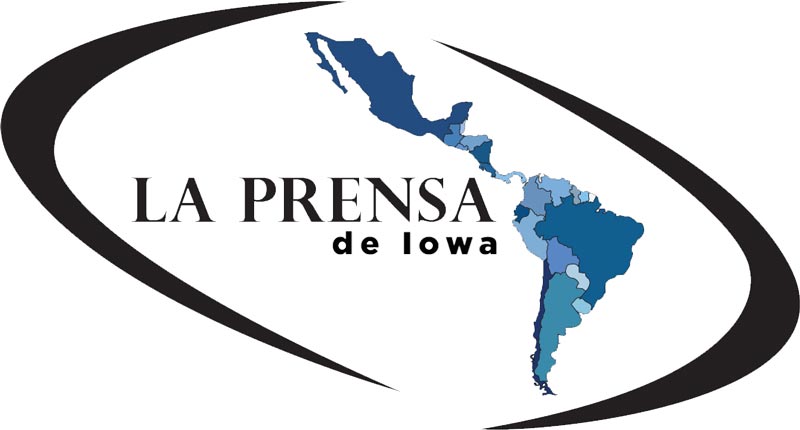Mexicanos que solicitan asilo enfrentan largas esperas
/Los solicitantes de asilo mexicanos esperan para solicitar protección en un puerto de entrada de los Estados Unidos Foto cortesía de Human Rights Watch
Redacción
LA PRENSA
Agentes de la Oficina de Aduanas y Protección Fronteriza (CBP, por sus siglas en inglés) de Estados Unidos han denegado la entrada al país a solicitantes de asilo mexicanos, exponiendo a miles, entre ellos familias enteras y menores de edad, a condiciones peligrosas en las ciudades fronterizas mexicanas, lo que supone una violación del derecho internacional de refugiados, señaló hoy Human Rights Watch.
Varias decenas de solicitantes de asilo mexicanos en Ciudad Juárez, México, dijeron a Human Rights Watch en noviembre de 2019 que habían sido rechazados después de intentar solicitar asilo en un puerto de entrada de EE. UU. Algunos llevaban meses esperando su turno en una lista manuscrita autoorganizada para establecer cuándo les tocaba presentarse en el puerto de entrada.
“El rechazo por parte del gobierno de Trump de los solicitantes de asilo mexicanos en la frontera supone un nuevo golpe bajo en su campaña por desmantelar las protecciones de aquellos que buscan asilo”, dijo Clara Long, investigadora principal del Programa de Estados Unidos en Human Rights Watch. “La prohibición del retorno de los refugiados al país del que huyen, incluidas las devoluciones en la frontera, constituye una obligación fundamental del derecho internacional”.
Human Rights Watch acompañó a 46 solicitantes de asilo mexicanos, más de la mitad de los cuales eran menores con sus padres, en su propósito de presentarse ante agentes de la CBP en el puente Paso del Norte entre Ciudad Juárez y El Paso, Texas. Los agentes de la CBP insistieron una y otra vez a los solicitantes de asilo que el puerto de entrada estaba “demasiado lleno”. El 22 de noviembre, Human Rights Watch vio cómo agentes de la CBP rechazaron al menos a dos familias mexicanas y un adulto mexicano después de informar explícitamente a los agentes que huían de México y deseaban solicitar asilo en EE.UU.
Todos los países, independientemente de que hayan firmado o no la Convención sobre el Estatuto de los Refugiados de 1951, están obligados a respetar el principio del derecho internacional consuetudinario de no devolución: la obligación de los gobiernos de no devolver a una persona a un país donde esté en riesgo de ser sometido a persecución, tortura u otro trato cruel o inhumano.
En abril de 2018, funcionarios de inmigración de EE.UU. formalizaron una política de “medición” (metering), práctica consistente en permitir que solo un número limitado de solicitantes de asilo ingresen en los puertos de entrada cada día, aunque esto ya fue documentado por primera vez por observadores independientes a mediados de 2016. Las mediciones se aplicaban inicialmente a los solicitantes de asilo no mexicanos; la directiva de abril de 2018 sugería que la agencia entendía su obligación de no exponer a los solicitantes de asilo mexicanos a la amenaza de persecución en México al instruir a los funcionarios de la CBP a que “prestaran particular atención” a cualquier esfuerzo por parte de las autoridades mexicanas para evitar que los ciudadanos mexicanos que reclamaban temor al retorno entrasen en EE.UU.
Sin embargo, en los últimos meses, el gobierno ha comenzado a medir a los solicitantes de asilo mexicanos. Un estudio académico independiente contó a más de 11.000 en espera de ingresar a EE.UU. a través de la frontera terrestre en noviembre de 2019. El estudio estimó un total de 21.398 solicitantes de asilo de todas las nacionalidades esperando entrar en EE.UU. bajo el sistema de medición.
A mediados de noviembre, la Unión Americana de Libertades Civiles (ACLU, por sus siglas en inglés) presentó una quejaante la Oficina del Inspector General del Departamento de Seguridad Nacional con 18 ejemplos de familias e individuos de nacionalidad mexicana que habían solicitado asilo y que habían sido sometidos al sistema de mediciones en Ciudad Juárez y Matamoros, México. Una demanda colectiva pendiente desde 2017 desafía el uso de la medición por parte del gobierno como una violación del derecho estadounidense y las protecciones legales internacionales para aquellos que buscan asilo.
“Las familias mexicanas que representamos han estado acampadas en condiciones precarias en el puerto de entrada de EE.UU. durante meses tratando de buscar seguridad en EE.UU.”, dijo Tania Guerrero, abogada del proyecto de la Catholic Legal Immigration Network, un proveedor nacional de servicios jurídicos de inmigración. “Varias personas de las que estamos llevando a cabo un seguimiento finalmente han sido admitidas y han pasado una entrevista de evaluación que muestra que tienen una posibilidad significativa de que su solicitud de asilo sea aceptada en base a un temor fundado de sufrir persecución en México. La mayoría dice que no se sienten seguros durante sus meses de espera en Juárez”.
Las temperaturas nocturnas en Ciudad Juárez han caído recientemente bajo cero, mientras cientos de solicitantes de asilo mexicanos siguen esperando en tres puentes entre Ciudad Juárez y El Paso, según Edith Tapia, analista de investigación política del Hope Border Institute, una organización de derechos humanos con sede en El Paso. Los funcionarios de Juárez habrían presuntamente presionado a los inmigrantes que estaban acampados en los puentes para que se trasladasen a albergues, y amenazaron con su expulsión si no obedecían. Solicitantes de asilo mexicanos acampados en Ciudad Juárez recientemente declararon a El Paso Times que se niegan a recibir asistencia del gobierno porque no confían en el gobierno mexicano.
El Congreso de EE.UU. y los organismos federales de supervisión, así como el Alto Comisionado de Naciones Unidas para los Refugiados deberían investigar con urgencia el trato que reciben los solicitantes de asilo mexicanos en la frontera por parte del gobierno de Trump, dijo Human Rights Watch. Las agencias fronterizas deben asegurarse de que tratan a los solicitantes de asilo de conformidad con las leyes estadounidenses e internacionales.
“Los funcionarios de EE.UU. están incumpliendo sus obligaciones bajo el derecho estadounidense e internacional de recibir a los solicitantes de asilo en la frontera que huyen de la persecución”, dijo Tapia. “Rechazar a los solicitantes de asilo mexicanos pone en peligro sus vidas”.
Casos de solicitantes de asilo mexicanos rechazados en la frontera con Estados Unidos:
El 22 de noviembre, soldados armados de la Guardia Nacional Mexicana y guardias de seguridad privados que trabajaban para el gobierno mexicano amenazaron con retirar físicamente del puente internacional a 18 solicitantes de asilo mexicanos que intentaban presentarse ante agentes de la CBP. Observadores de Human Rights Watch, el Hope Border Institute y la Catholic Legal Immigration Network también fueron amenazados con ser físicamente trasladados a México, cuando se pararon directamente frente a dos agentes de la CBP en la frontera internacional. Los agentes de la CBP inicialmente afirmaron que “no tenían control sobre lo que sucede en el lado mexicano” de la frontera. Después de que los solicitantes de asilo pasaron dos horas presionando su caso acompañados por observadores, los agentes de la CBP dijeron a las fuerzas mexicanas que aceptarían a los solicitantes de asilo y finalmente tomaron al grupo de 18 solicitantes de asilo bajo custodia para su procesamiento.
Los solicitantes de asilo mexicanos dijeron a Human Rights Watch que buscaban protección en EE.UU. para escapar de severos daños.
“Beatriz B.”, de 37 años, dijo a Human Rights Watch que huyó del estado mexicano de Zacatecas con dos hijos adolescentes después de que unos hombres que según ella pertenecían a un cartel de drogas secuestraron a uno de sus hijos. Cuando exigieron un rescate por él, los miembros del cartel le dijeron a Beatriz que “le cortarían la cabeza y le enviarían una foto”. Ella dijo que siguió recibiendo amenazas de los secuestradores después de pagar el rescate y huir a otro estado mexicano con sus hijos. Entonces decidió huir a EE.UU. Antes de su reunión con Human Rights Watch, ella y sus hijos se habían presentado ante las autoridades estadounidenses, pero les instruyeron que debían “seguir el proceso” y esperar.
“Gabriela G.”, de 26 años, había huido del estado de Guerrero con su hijo de 9 años para buscar protección en EE.UU. de un esposo abusivo que había golpeado a sus hijos y había amenazado con matarla. Anteriormente había huido a otro estado en México con el niño de 9 años y su hermano de 10 años, pero su esposo la había perseguido hasta allí y se había llevado al hijo mayor al estado de Guerrero. Gabriela le dijo a Human Rights Watch que temía que su esposo la encontrara esperando en la frontera y se llevara a su otro hijo.
“Manuel M.”, de 31 años, dijo a Human Rights Watch que viajaba con su esposa y sus cinco hijos después de que un cartel lo hubiera reclutado por la fuerza en Guerrero. Dijo que él y su familia fueron secuestrados en 2017 durante tres días en Guerrero por miembros del cartel. Su familia luego se mudó a un estado del norte de México, donde permanecieron durante dos años. Dijo que decidió irse después de que su familia empezó a notar vehículos misteriosos patrullando su vecindario y que sus vecinos les dijeron que unos hombres desconocidos habían preguntado por sus hijas. En el momento de la reunión con Human Rights Watch, llevaban nueve semanas esperando para poder pedir asilo en EE.UU.
“Eduardo N.”, de 25 años, dijo que “le iba muy bien en Guerrero” trabajando para la empresa familiar de su esposa. Sin embargo, esto cambió después de que el cartel matara a un miembro de la familia por negarse a pagar una tarifa extorsiva a la organización criminal. Después de que un miembro del cártel lo amenazó directamente por la misma suma, huyó con su familia a un estado del centro-sur de México, donde vivió durante seis meses y trabajó en un gran almacén. Él y su esposa decidieron abandonar el estado inmediatamente después de que alguien en su nuevo vecindario afiliado al cartel de Guerrero los reconoció. “Huimos de la violencia, pero aquí es peor”, dijo sobre su espera de casi dos meses en el campamento de carpas en Juárez donde vive con su esposa y su hija pequeña.
Algunos solicitantes de asilo mexicanos que cruzaron a EE.UU. en El Paso parecen haber sido incluidos en un programa piloto de la CBP para acelerar la evaluación de asilo cuando se encuentran bajo custodia de la CBP. El programa, conocido como el “Proceso de revisión de asilo humanitario” (HARP, por sus siglas en inglés), mantiene a los solicitantes de asilo efectivamente incomunicados mientras pasan por una apresurada entrevista para examinar su “miedo creíble” y, en caso de ser rechazados, deben seguir esperando a una revisión telefónica por parte de un juez de inmigración. A principios de diciembre, la ACLU presentó una demanda para acabar con HARP y un programa relacionado por violaciones del debido proceso y acceso a un abogado. Human Rights Watch ha documentado anteriormente graves riesgos de devolución en el proceso de “expulsión acelerada” que se utiliza en el programa HARP, incluso en el contexto de su uso en la detención de Inmigración y Control de Aduanas, donde el acceso a un abogado es marginalmente mejor.
Google Translation
Agents from the U.S. Customs and Border Protection Office (CBP) have denied entry to the country to Mexican asylum seekers, exposing thousands, including entire families and minors, to dangerous conditions in Mexican border cities, which is a violation of international refugee law, Human Rights Watch said today. Several dozen Mexican asylum seekers in Ciudad Juarez, Mexico, told Human Rights Watch in November 2019 that they had been rejected after attempting to apply for asylum at a U.S. port of entry. UU. Some had been waiting for their turn on a self-organized handwritten list for months to establish when it was their turn to appear at the port of entry. "The rejection by the Trump administration of Mexican asylum seekers at the border is a new low blow in their campaign to dismantle the protections of those seeking asylum," said Clara Long, principal investigator for the United States Program at Human Vigilancia de los derechos. "The prohibition of the return of refugees to the country they are fleeing from, including returns at the border, constitutes a fundamental obligation of international law." Human Rights Watch accompanied 46 Mexican asylum seekers, more than half of whom were minors with their parents, in their intention to appear before CBP agents on the Paso del Norte bridge between Ciudad Juarez and El Paso, Texas. CBP agents insisted again and again to asylum seekers that the port of entry was "too crowded." On November 22, Human Rights Watch saw how CBP agents rejected at least two Mexican families and one Mexican adult after explicitly informing agents fleeing Mexico and wishing to apply for asylum in the US. All countries, regardless of whether or not they have signed the 1951 Refugee Statute Convention, are obliged to respect the principle of customary international law of non-refoulement: the obligation of governments not to return a person to a country where he is at risk of being subjected to persecution, torture or other cruel or inhuman treatment. In April 2018, U.S. immigration officials they formalized a “metering” policy, a practice that allows only a limited number of asylum seekers to enter the ports of entry every day, although this was already documented for the first time by independent observers in mid-2016. measurements were initially applied to non-Mexican asylum seekers; The April 2018 directive suggested that the agency understood its obligation not to expose Mexican asylum seekers to the threat of persecution in Mexico by instructing CBP officials to “pay particular attention” to any effort by Mexican authorities to prevent Mexican citizens claiming fear of return from entering the US However, in recent months, the government has begun measuring Mexican asylum seekers. An independent academic study counted more than 11,000 waiting to enter the US across the land border in November 2019. The study estimated a total of 21,398 asylum seekers of all nationalities waiting to enter the U.S. Under the measurement system. In mid-November, the American Civil Liberties Union (ACLU) submitted a complaint to the Office of the Inspector General of the Department of Homeland Security with 18 examples of families and individuals of Mexican nationality who had applied for asylum and who had underwent the measurement system in Ciudad Juárez and Matamoros, Mexico. A class action lawsuit pending since 2017 challenges the use of government measurement as a violation of US law and international legal protections for those seeking asylum. “The Mexican families we represent have been camped in precarious conditions at the US port of entry. for months trying to find security in the US, ”said Tania Guerrero, a project lawyer for the Catholic Legal Immigration Network, a national provider of immigration legal services. “Several people of whom we are following up have finally been admitted and have passed an evaluation interview that shows that they have a significant possibility that their asylum application will be accepted based on a well-founded fear of persecution in Mexico. Most say they don't feel safe during their waiting months in Juarez. ” Nighttime temperatures in Ciudad Juarez have recently fallen below zero, while hundreds of Mexican asylum seekers are still waiting on three bridges between Ciudad Juarez and El Paso, according to Edith Tapia, political research analyst at Hope Border Institute, a human rights organization with headquarters in El Paso. Juarez officials allegedly pressured immigrants who were camped on the bridges to move to shelters, and threatened their expulsion if they did not obey. Mexican asylum seekers camped in Ciudad Juarez recently told El Paso Times that they refuse to receive government assistance because they do not trust the Mexican government. The US Congress and federal oversight agencies, as well as the United Nations High Commissioner for Refugees, should urgently investigate the treatment of Mexican asylum seekers at the border by the Trump administration, Human Rights Watch said. Border agencies must ensure that they treat asylum seekers in accordance with US and international laws. “US officials they are breaking their obligations under US and international law to receive asylum seekers at the border fleeing persecution, ”said Tapia. "Rejecting Mexican asylum seekers endangers their lives." Cases of Mexican asylum seekers rejected on the border with the United States: On November 22, armed soldiers of the Mexican National Guard and private security guards working for the Mexican government threatened to physically remove 18 Mexican asylum seekers from the international bridge trying to present themselves to CBP agents. Human Rights Watch observers, the Hope Border Institute and the Catholic Legal Immigration Network were also threatened with being physically transferred to Mexico, when they stood directly in front of two CBP agents on the international border. CBP agents initially claimed that "they had no control over what happens on the Mexican side" of the border. After asylum seekers spent two hours pressing their case accompanied by observers, CBP agents told Mexican forces that they would accept asylum seekers and finally took the group of 18 asylum seekers in custody for processing. Mexican asylum seekers told Human Rights Watch that they sought protection in the US To escape severe damage. “Beatriz B.,” 37, told Human Rights Watch that she fled the Mexican state of Zacatecas with two teenage children after men who she said belonged to a drug cartel kidnapped one of her children. When they demanded a ransom for him, the cartel members told Beatriz that "they would cut off his head and send him a picture." She said she continued to receive threats from the kidnappers after paying the ransom and fleeing to another Mexican state with her children. Then he decided to flee to the US Before her meeting with Human Rights Watch, she and her children had appeared before the US authorities, but instructed them to "follow the process" and wait. “Gabriela G.,” 26, had fled the state of Guerrero with her 9-year-old son to seek protection in the US. of an abusive husband who had beaten his children and threatened to kill her. She had previously fled to another state in Mexico with the 9-year-old boy and her 10-year-old brother, but her husband had chased her there and had taken the eldest son to the state of Guerrero. Gabriela told Human Rights Watch that she was afraid her husband would find her waiting at the border and take her other son. “Manuel M.,” 31, told Human Rights Watch that he was traveling with his wife and five children after a cartel had forcibly recruited him in Guerrero. He said he and his family were kidnapped in 2017 for three days in Guerrero by cartel members. His family then moved to a state in northern Mexico, where they remained for two years. He said he decided to leave after his family began to notice mysterious vehicles patrolling his neighborhood and that his neighbors told them that unknown men had asked about their daughters. At the time of the meeting with Human Rights Watch, they had been waiting for nine weeks to request asylum in the US. "Eduardo N.", 25, said he "was doing very well in Guerrero" working for his wife's family business. However, this changed after the cartel killed a family member for refusing to pay an extortive fee to the criminal organization. After a cartel member threatened him directly for the same sum, he fled with his family to a state in central-southern Mexico, where he lived for six months and worked in a large warehouse. He and his wife decided to leave the state immediately after someone in their new neighborhood affiliated with the Guerrero cartel recognized them. "We fled the violence, but here it is worse," he said of his wait of almost two months in the tent camp in Juarez where he lives with his wife and young daughter. Some Mexican asylum seekers who crossed into the US in El Paso they appear to have been included in a CBP pilot program to accelerate the asylum evaluation when they are in CBP custody. The program, known as the “Humanitarian Asylum Review Process” (HARP), keeps asylum seekers effectively in solitary confinement as they go through a hasty interview to examine their “credible fear” and, in case of If they are rejected, they should continue waiting for a telephone review by an immigration judge. In early December, the ACLU filed a lawsuit to end HARP and a related program for violations of due process and access to a lawyer. Human Rights Watch has previously documented serious return risks in the “expedited expulsion” process used in the HARP program, even in the context of its use in immigration detention and Customs Control, where access to a lawyer is marginally better.
























